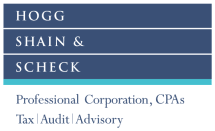What Is Capital Structure?

In a nutshell, capital structure refers to the manner in which a business finances its assets, whatever they may be. Most businesses seek to spread out their risk and lower the cost of their debt by using a combination of capital types – sometimes dozens of them, which typically fall into one of two categories:
Equity capital
This category includes all the funds contributed by the owners and any other shareholders, including capital that was originally contributed in return for an ownership interest and returned earnings – profits that have been retained by the company to bolster its balance sheet or fund company growth.
Debt capital
Debt capital refers to money that’s been borrowed through bonds or other investments to fund the business’ growth or operations. It can include different types of debt, such as:
- Senior debt: Senior debt represents the first level of liabilities, which means that in case of bankruptcy or liquidation, it’s paid out before other creditors. In many cases it provides a relatively low risk for the lender because it is generally secured by collateral. Senior debt is generally repaid on an established schedule and at a stipulated rate of interest
- Mezzanine debt: A form of hybrid debt, mezzanine debt typically involves some sort of convertible structure that allows the lender’s financial stake to be converted into stocks or other form or partial ownership after a specified period of time. Because mezzanine debt is subordinated to senior debt and generally loaned to a business with less restriction, lenders typically require a higher rate of return on their investment.
- Debt alternatives: When people speak of debt alternatives, they’re often talking about debt restructuring or forbearance, which is essentially a restructuring of terms to allow the business more time to repay a loan, often at rates that are more favorable to the business. Vendor capital is a type of alternative debt that uses the vendor’s money to help grow a business; for instance, a business buys products on credit – the vendor’s capital – and then turns around and sells those products, using the profits to repay the credit extended by the vendor.
Structuring capital sources appropriately is an essential part of business planning, one which will evolve as your business grows. There are many options – some of which can be confusing to understand. Before deciding on the capital structure we suggest that you consult with the experts in business strategy and financial planning at Hogg, Shain, and Scheck. Allow our experienced accountants show you how to successfully structure your business capital for long term success. Contact us today.






